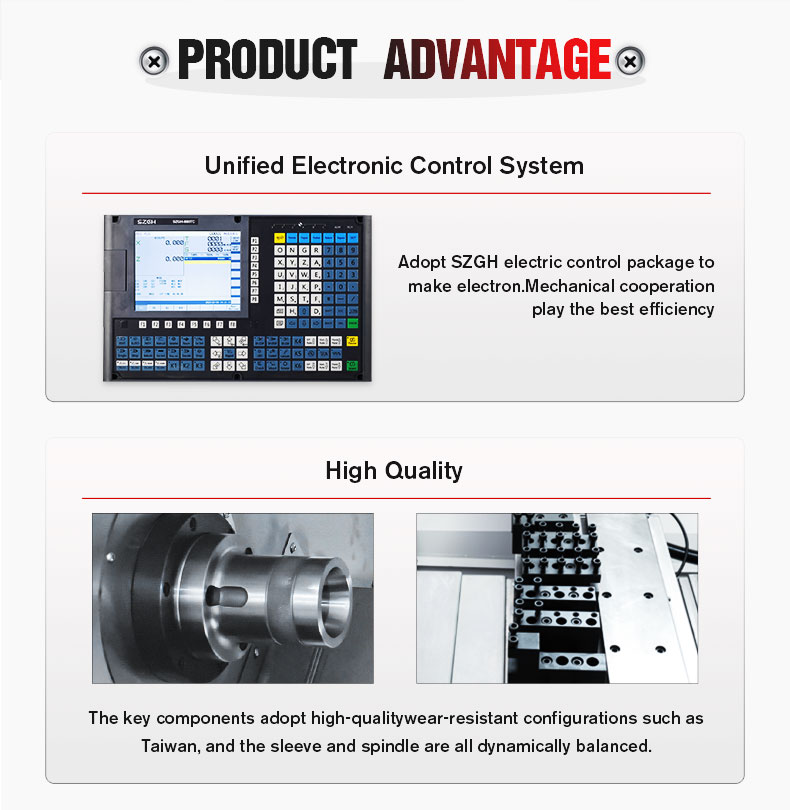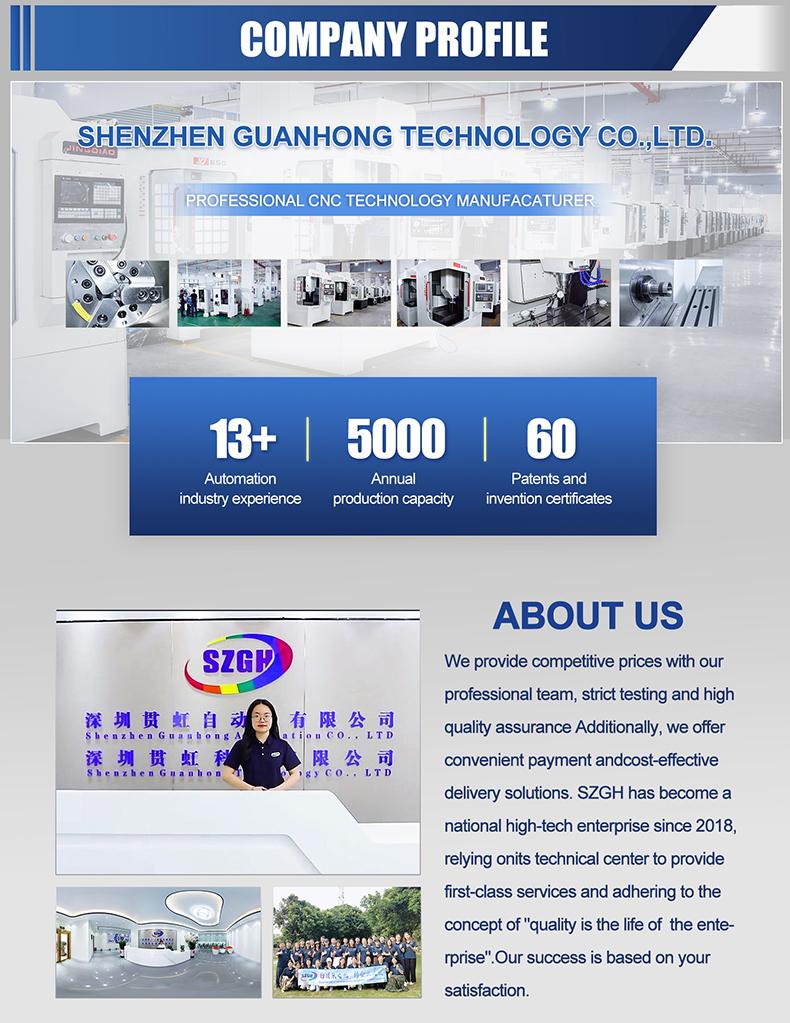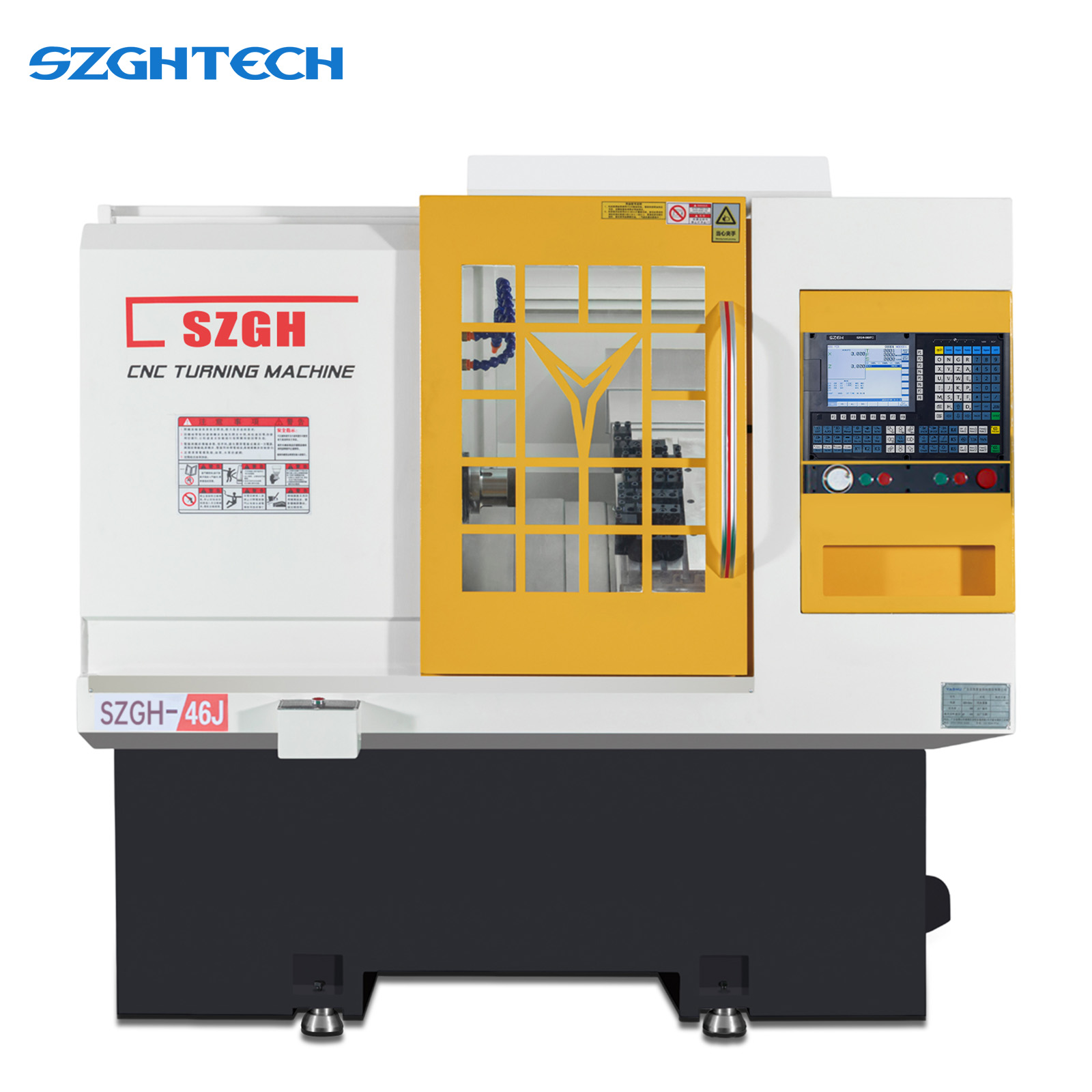In the CNC machining field, high-quality lathes are essential for improving production efficiency and product precision. The SZGH-46J lathe, a high-quality lathe with outstanding performance, is widely used in a wide range of fields, including automotive parts.
The SZGH-46J lathe offers exceptional adaptability in its machining range, perfectly meeting the needs of mass production of workpieces of varying materials and specifications. For bar machining, it can precisely process a variety of common metal materials, including copper, iron, aluminum, and stainless steel, with diameters up to 45mm. Whether machining copper and aluminum with high plasticity or iron and stainless steel with high hardness, it ensures stable and efficient machining, achieving dimensional and shape accuracy standards for the finished product. For open-end forging machining, this lathe can handle mass production of forgings up to 45mm in diameter, fully adapting to the machining characteristics of forging blanks and laying a solid foundation for subsequent precision machining.
The SZGH-46J lathe is also equipped with an automatic feeding function, significantly reducing manual intervention, minimizing operational erro
rs, and improving production continuity. It is particularly suitable for large-scale batch production, effectively shortening production cycles and increasing production efficiency. Furthermore, for single-piece production, the SZGH-46J lathe can be flexibly equipped with a hydraulic chuck. Leveraging the chuck's powerful clamping force and stable clamping accuracy, it can complete single-piece machining of parts with a diameter of up to 45mm, catering to both batch production and single-piece customization needs, further broadening the machine's application scenarios.
In terms of control system configuration, the SZGH-46J lathe is equipped with SZGH's newly developed, high-quality lathe controller, the SZGH-1080TC. This dedicated controller is tailored to the performance characteristics and machining requirements of the SZGH-46J lathe. It features a rich set of functional modules that precisely adapt to the lathe's various machining operations, enabling precise control of machining parameters, such as cutting speed, feed rate, and spindle speed, with real-time adjustment of key parameters. It also boasts a stable operating system, effectively preventing production interruptions caused by control system failures and ensuring a smooth machining process. The SZGH-1080TC controller features a simple and intuitive user interface, making it easy for operators to quickly master the system, reducing operational complexity and further optimizing machining processes.
About the SZGH-46J Lathe:
X-axis effective travel: 900mm
Z-axis effective travel: 300mm
High-quality spindle with 5.5kW or 7.5kW motor power
Spindle nose: A2-5
Optional 6-inch or 8-inch chucks
| Project | Unit | Standard value | Max value | |
| Processing capacity | Max. diameter of bar bore | mm | 45 | - |
| Max. particle diameter (disk type) | mm | 400 | 420 | |
Max. length of workpiece | mm | 300 | 320 | |
| Cutting amount of stainless steel on one side | mm | 3 | 4.5 | |
| Machining accuracy of the workpiece | mm | ±0.0075 | - | |
| Surface roughness | Ra | 1.6 | 1.6 | |
| the height of center tool holder | mm | 50 | - | |
| Turning Diameter | mm | 420 | - | |
| Square Knife Specifications | mm | 20*20 | - | |
| Travels | X-axis effective travel | mm | 900 | - |
| Z-axis effective travel | mm | 300 | - | |
| Feed | X-axis rapid traverse | m/min | 25 | 30 |
| Z-axis rapid traverse | m/min | 25 | 30 | |
| X-axis servo-motor power | kW | 1.5 | - | |
| Z-axis servo-motor power | kW | 1.5 | - | |
| Spindle | Max.Spindle Speed | rpm | 3500 | 4000 |
| Spindle Motor Power | kW | 5.5Kw servo | 7.5kw servo | |
| Spindle nose taper | - | A2-5 | - | |
| Support hydraulic chuck size | inch | 8 | 10 | |
| Dimensions | Dimensions | mm | 2100*1500*1900 | - |
| Total Weight | kg | 2350 | - | |
Why Choose SZGHTECH:
1.SZGHTECH has been specialized in producing automation equipment for more than ten years, including CNC milling and lathe machine, servo motor and controller...
2.SZGHTECH provide the most complete services.We have very high-quality products and very professional R&D and technical teams.
3.LanguageSpoken:English,Chinese,Spanish,Japanese,Portuguese,German,Arabic,French,Russian,Korean, Italian, and so on.
4.SZGHTECH's mission is: quality first, customer first. Welcome to consult SZGHTECH's CNC lathes from all over the world. We are online 24 hours a day to serve you!






